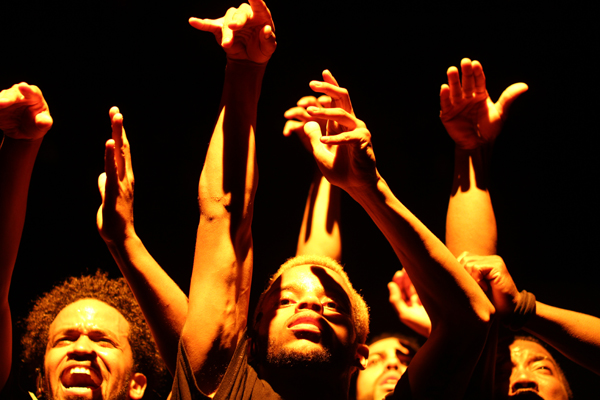3Qs: Creativity + design + action

We asked Bree Edwards, director for the Northeastern Center for the Arts, to discuss the center’s mission, what programs are coming up this semester, and how the center is engaging students through interdisciplinary, experiential-learning opportunities.
What is the center’s history and mission?
The Northeastern Center for the Arts has organized public events in the performing arts for the university and local community since 1993. In 2010, the center became part of the newly formed College of Arts, Media, and Design.
If I were to give a short description of the center, I would say that we are energetic, collaborative, and entrepreneurial. I consider the center to be the front door to our college, giving the campus access to the work that our faculty and students are engaged with. Working with our faculty, the center also brings world-class artists, writers, and performers to the Northeastern campus, providing students direct access to the world’s most fascinating thinkers, makers, and intellectual leaders.
I am excited by and honored to work with the CAMD faculty—the musicians, composers, performers, cultural critics, innovators, and artists.
What programs and events are coming up?
Our 2013 season kicks off with an extremely energetic and provocative performance called Word Becomes Flesh, which was written and directed by Marc Bamuthi Joseph. Smithsonian magazine called Marc one of America’s top young innovators in the arts and sciences. Word is an incredibly powerful piece—physically, intellectually, and emotionally—that fuses hip-hop, theatre, and contemporary dance to explore themes of race, gender, and parenthood in contemporary American society. It’s a performance not to be missed.
We are also working with our colleagues in the Department of Communication Studies to bring the talented and provocative Bay Area video blogger Anita Sarkeesian to campus in November. Sarkeesian has created a series of YouTube videos about the portrayal of women in video games and popular culture. Her talk also connects to the college’s game design program, which we will be working with next April.
In October, we will kick off Richard Saul Wurman’s Conversations at CAMD. This is a series of public conversations, curated by the founder of the TED conference, in which Wurman will sit down with some of the world’s most fascinating thinkers, makers, and doers to discuss topics such as sustainability, urban design, and how to best support learning and intellectual curiosity. This series is run in conjunction with Northeastern’s new MFA in Information Design and Visualization.
Describe the impact of the center’s interdisciplinary focus, and the opportunities this will create for students and faculty.
The center is always looking for ways to connect directly with Northeastern students. The UniSons, one of Northeastern’s a cappella student groups, will open the performance of Word Becomes Flesh in Blackman Auditorium on Saturday. And we are hosting a number of workshops for students to work directly with the guest artists and performers we bring to campus. We are planning to start a street team and will be looking for students interested in promotion and live event production. We also plan to offer a co-op position this spring, in which students would work with center staff. We are also very excited to curate the itinerary for the CAMD Creative Leaders program, connecting the college’s students with Boston’s most courageous thinkers, designers, and leaders in the arts.
I am interested in the ways in which the Northeastern Center for the Arts can participate in the important ideas of our time. We want to trail blaze the ways in which artists, performers, media makers, and the industries associated with these disciplines, can engage with important contemporary issues.
We believe that artists, creativity, and entrepreneurship contribute to society in incredibly thoughtful, provocative, and challenging ways. Because we are part of an interdisciplinary college, it forces us to break out of the silo of working in one discipline. Instead, we collaborate across disciplines, across the university, and across the city of Boston. From day one the center’s collaborative ethos has included getting out into the neighborhoods that surround the Northeastern campus and working with other cultural organizations in Boston.





